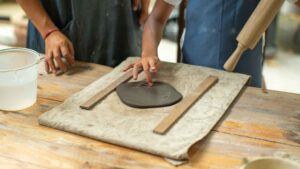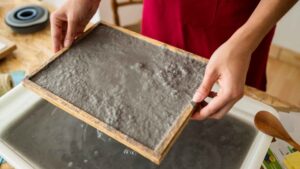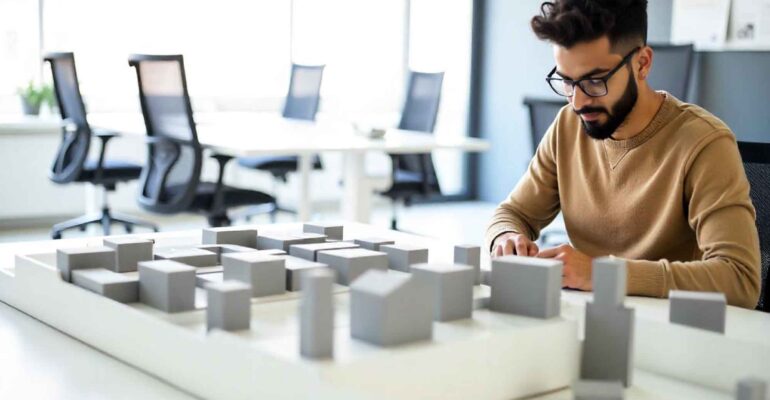“Concrete Thinking: Material, Method, and Meaning”
July 8, 2025 2025-07-19 6:56“Concrete Thinking: Material, Method, and Meaning”
Concrete shapes our cities, supports our buildings, and defines the strength of modern design. At Dhruva College of Design & Graduate Studies, recognized as a top design college in Hyderabad, we train students to use concrete not as a construction material, but as a dynamic medium for architectural and interior design expression.
What Happens When Concrete Sets?
When students mix cement, water, sand, and aggregates, they trigger hydration, a chemical reaction that hardens cement and binds materials into a durable form.
At Dhruva College of Design & Graduate Studies, a leading interior design institute in Hyderabad, students:
- Select the appropriate cement types for diverse applications
- Adjust the water-to-cement ratio to balance strength and workability
- Choose aggregates based on their texture, weight, and functionality
In our state-of-the-art design labs, students test and observe how minor changes affect performance, developing the kind of practical insight that defines a hands-on design college.
Using Concrete as a Creative Medium
At Dhruva College of Design & Graduate Studies, we encourage students to use concrete to push creative limits. Whether working on large-scale structures or elegant interior pieces, students learn to:
- Build precise custom formwork
- Apply color, texture, and advanced finishes
- Use reinforcements like steel or fibers for durability
- Design interior elements like walls, countertops, planters, and sculptural furniture

As the best college for interior design in Hyderabad, Dhruva equips students to make concrete not only functional but also visually compelling.
Combining Material and Meaning
At this leading architecture and design institute, students combine material science with creative design thinking. We give them tools to think critically and design intentionally.
They master:
- Advanced concrete technology and applications
- Innovative construction systems and structural methods
- Casting, prototyping, and modular design techniques
- Digital skills through 3D modeling and design visualization tools

Our interior design courses in Hyderabad prepare students to respond to spatial needs, environmental concerns, and human-centered design goals.
Design Sustainably with Concrete
We teach students to use concrete responsibly. At Dhruva College of Design & Graduate Studies, where creative design education in Hyderabad meets sustainability, students learn to:
- Formulate eco-friendly concrete mixes
- Reuse materials like fly ash, slag, and crushed glass
- Minimize waste with precise and efficient casting methods
- Experiment with low-carbon cement and green concrete technology
Conclusion:
At Dhruva College of Design & Graduate Studies, we don’t only teach the mechanics of concrete, we empower students to turn this foundational material into inspired design solutions. As the best interior college in Hyderabad, we shape future designers who lead with innovation, empathy, and skill.
Our students don’t simply build, they imagine, design, and transform. They use concrete to express bold ideas, solve real-world problems, and create aesthetically and functionally rich spaces. With a perfect balance of hands-on learning, technical expertise, and visionary thinking, Dhruva stands as the top choice for interior design education in Hyderabad.






